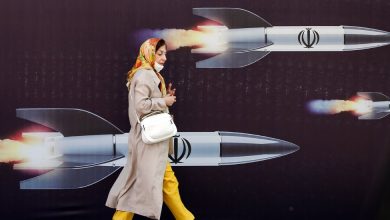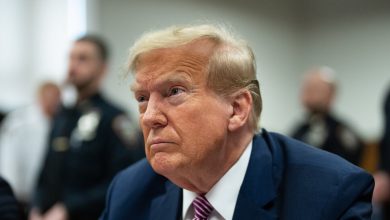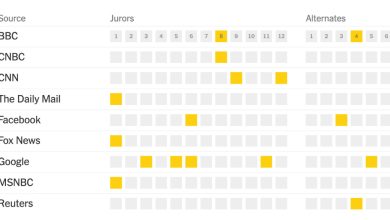Beijing Escalates Restrictions, but Still Stops Short of Lockdown

With new cases of the coronavirus continuing to accumulate in Beijing, officials over the weekend introduced sweeping new restrictions while stopping short of a full lockdown, a sign of the political and economic challenges that controlling an outbreak in China’s capital poses.
As the five-day May Day holiday began on Saturday, local officials announced a ban on dining in restaurants until Wednesday. They also said that as of Thursday, proof of a negative test within the last week would be required to enter public spaces, including public transportation. And they ordered the closure of Universal Beijing Resort, one of the city’s major tourist attractions.
Those new restrictions followed three rounds of mandatory testing for nearly all of the city’s 22 million residents, and a decision on Thursday to close Beijing’s schools, without specifying when they would reopen. Beijing has recorded more than 300 cases since April 22, including 59 on Saturday, the most so far in one day.
But unlike other Chinese cities, including the southern economic hub of Shenzhen, that have locked down after detecting just a few cases, Beijing has continued to seal off only certain buildings or neighborhoods. Many residents are still free to move around the city.
The more measured approach reflects the competing pressures that officials in the city must balance. China’s leader, Xi Jinping, has doubled down on the country’s policy of stamping out local transmission — making it the last major country trying to do so — and has tied success in that effort to the Chinese Communist Party’s political legitimacy. Beijing, as the seat of the government, has enormous symbolic importance, and for the past two years it has largely avoided major Covid flare-ups.
But a full-scale lockdown would require enormous manpower and planning to execute smoothly. Otherwise, the authorities would risk stoking public discontent of the kind that has erupted in Shanghai over the past month, where a lockdown has led to food and medicine shortages. And like Shanghai, Beijing is home to many well-educated, affluent residents who would likely not hesitate to air their complaints.
“They are facing a dilemma here,” Yanzhong Huang, director of the Center for Global Health Studies at Seton Hall University, said of Beijing officials. “Any decision you make has more profound political implications compared with other cities.”
For now, Dr. Huang said, officials are opting for a restrained approach. But “when push comes to shove, they have to make a decision. So we cannot rule out that possibility” of a lockdown, he said.
When cases first began rising in Beijing, many residents, spooked by the chaos in Shanghai, rushed to grocery stores to stockpile food, leading to empty shelves and simmering anxiety. In the days since, officials have sought to reassure residents that the outbreak has not spiraled out of control, and that food supplies will be ample even if harsher measures are introduced.
At a news conference on Sunday, health officials said they had successfully sequenced dozens of cases and established clear chains of transmission.
Beijing officials were clearly hoping that by acting more quickly than their counterparts in Shanghai had — conducting earlier mass testing, for example, and building makeshift hospitals in preparation for a surge of cases — they could stave off the need for a lockdown, Dr. Huang said.
But life in the city remained far from normal, as residents kicked off what would usually have been a five-day period of extensive travel and gatherings.
In the Chaoyang District, one of the city’s most affluent and also where many cases have been detected, residents lined up for another round of compulsory testing, which would be followed by another mandated for Tuesday. Chaoyang Park, one of Beijing’s largest parks, announced a ban on picnicking and other group gatherings.
At the historic Forbidden City, where entry tickets would normally have sold out well in advance of the holiday, the palace’s grounds were quiet and mostly empty.
In announcing the ban on dining at restaurants, officials said there had been many infections found among dining staff. “Dining together has become the main risk of infection,” Ding Jianhua, a city commerce official, said at a news conference.
The Latest on China: Key Things to Know
A strict Covid policy. As China grapples with its worst Covid outbreak since the beginning of the pandemic, the government is following a “zero Covid” strategy. The approach could have far-reaching effects and has revived concerns that the country is going back to a planned economy.
The war in Ukraine. China’s officials and its media are increasingly repeating the Kremlin’s narrative about the conflict. This joint propaganda has undercut Western efforts to isolate Russia diplomatically and has found a receptive audience in the Middle East, Africa and Latin America.
A new security deal. The Solomon Islands signed a sweeping security agreement with China that could threaten the stability of the entire Asia-Pacific region. The deal gives Beijing a foothold in an island chain that played a decisive role in World War II and could be used to block vital shipping lanes.
A pause on wealth redistribution. For much of last year, China’s top leader, Xi Jinping, waged a fierce campaign to narrow social inequalities and usher in a new era of “common prosperity.” Now, as the economic outlook is increasingly clouded, the Communist Party is putting its campaign on the back burner.
The closure of the Universal theme park also pointed to how quickly policies were shifting. Just days earlier, the park had reassured customers that it would stay open throughout the holiday, though they would have to provide proof of a negative test taken within the past 24 hours. The park did not say when it would reopen.
Jin Dongyan, a virologist at the University of Hong Kong, said that judging from the official data so far, the outbreak in Beijing seemed controllable. The authorities have not announced high numbers of untraceable infections, and caseloads are still relatively low, he said. In that sense, the restrictions might even be an overreaction, he said.
“It’s not like Shanghai in late March or early April — it’s not comparable,” Dr. Jin said of the Beijing case counts. But he acknowledged that the situation could change. “In Shanghai, at some point the cases were very, very low,” he said.
Cases in Shanghai are now trending downward. On Sunday, officials there reported about 7,800 new infections and 38 deaths, bringing the total number of deaths to 422.
The risk of community transmission has been “effectively curbed,” officials said at a news conference on Sunday. Mass screening will continue, and if fewer than one out of every 100,000 residents in a district test positive for three consecutive days, that area will be declared to have “basically cleared” the virus, they added.
So far, six of the city’s administrative districts have met that standard, and nine have not, they said.
Claire Fu contributed research.



